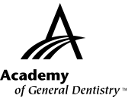|
Exercise No. 357
Subject Code: 150
Nutrition
The 15 questions for this exercise are based on the article, “What every dentist should know about tea,” on pages 64-66. This exercise was developed by Thomas C. Johnson, DMD, MAGD, in association with the General Dentistry Self-Instruction committee.
|
Reading the article and successfully completing this exercise will enable you to learn:
- the differences between the 4 types of teas;
- the potential health benefits of tea; and
- the potential health risks of tea.
|

